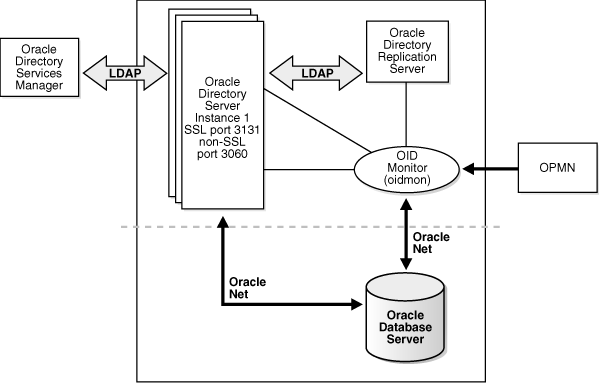| Lesson 2 | Oracle Net at a high level |
| Objective | Describe relationship between Oracle Net, client PCs, and database systems |
Oracle Net Communication with ClientPcs
Oracle Network Services play a vital role in the architecture of the Oracle Database System, forming the bridge between client PCs and the database system itself. The core components of these services, such as Oracle Net, facilitate and manage communication between client PCs and Oracle databases in an Oracle 11g environment. Understanding the relationship between these elements is crucial for effective management and optimization of Oracle-based solutions.
- Oracle Network Services: Oracle Network Services provide the functionalities necessary for the network communication in an Oracle environment. They consist of several components, including Oracle Net, Oracle Connection Manager, and Oracle Net Listener.
- Oracle Net: Oracle Net, formerly known as SQL*Net, is the software layer that provides network communication between a client application and an Oracle Database server. It's responsible for establishing and maintaining the connection between the client and server, allowing them to communicate and execute SQL commands. Oracle Net can support different network protocols and ensures data integrity during transmission.
- Oracle Connection Manager: This is a software component that acts as a proxy server, managing connections between client software and database servers. It provides features like connection concentration, which can handle a high number of simultaneous client connections to a single database server, as well as access c ontrol and network traffic filtering.
- Oracle Net Listener: The Listener is a separate process that runs on the database server machine, waiting for client connection requests. Once a request is received, the Listener starts a dedicated server process for that client session.
- Client PCs: These are the end-user machines running client applications. These applications could be Oracle tools, such as SQL*Plus or Oracle Forms, or third-party applications that use Oracle's APIs. They connect to the Oracle Database using Oracle's client software, which communicates with the Oracle Network Services to transmit requests and retrieve results.
- Oracle Database System: This is the heart of the Oracle environment, storing and managing the actual data. Oracle 11g database system operates on a client-server model where multiple client PCs can access and manipulate the data stored in the database concurrently. The Oracle Database system processes SQL commands received from the client PCs, performs the necessary data manipulations, and returns the results back to the client PCs.
Understanding Oracle Internet Directory Concepts and Architecture
An Oracle Internet Directory node consists of one or more directory server instances connected to the same directory store. The directory store or repository of the directory data is an Oracle Database. Figure 2-2 shows the various directory server elements and their relationships running on a single node. Oracle Net Services is used for all connections between the Oracle database server and:
LDAP is used for connections between directory server and:
- The Oracle directory server non-SSL port (3060 by default)
- The Oracle directory server SSL-enabled port (3131 by default)
- The OID Monitor
LDAP is used for connections between directory server and:
- Oracle Directory Services Manager
- Oracle directory replication server

Oracle Internet Directory node includes the following major elements:
Oracle Net Listener
A key component of Oracle Net is the Oracle Net Listener. This is a process (or service on NT) that runs on the database server,
and that monitors the network for incoming database connection requests. In order to access a database instance, such as the COIN instance, from a remote system, you must first tell the listener that the instance exists. This is done by editing a file named listener.ora that sits on the database server.
Oracle Net Client
Oracle Net also runs on client PCs that need to access an Oracle database. Just as you need to tell the Oracle Net Listener on the server about the databases on that server, you need to tell the Oracle Net client software on a PC about the databases to which you want to connect.
In order to access
COIN from a client computer, you need to tell the client that a COIN database exists,
and you also need to point the client to the server where the listener for the COIN database resides.
This is done by editing a file named tnsnames.ora that sits on the client PC.